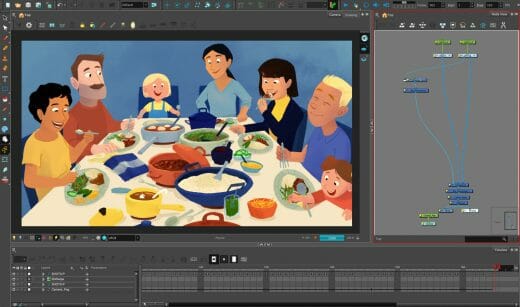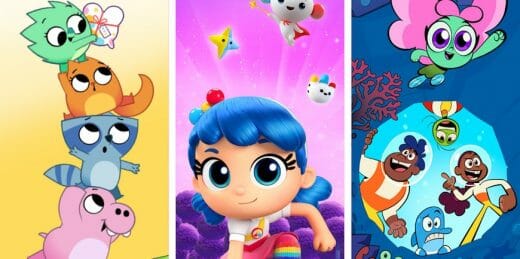
Disney’s Disenchanted picks up a few years after Enchanted‘s conclusion. Giselle, our fairy tale heroine-turned-modern New Yorker, finds that her life with her husband, stepdaughter, and baby is not as magical as she once hoped. When moving out of the city to the picturesque Monroeville doesn’t solve the problem, Giselle decides to dabble in magic she may not fully understand – possibly at the cost of her old life, her new home, and even her identity.
As with the preceding film, Disenchanted blends live action and animation to meld the “real” and fairy tales worlds together. Tonic DNA animated the 2D sequences in the film, as well as 2D animated elements in the live action scenes. As a result, the animation in Disenchanted captures the traditional Disney style with a modern digital pipeline that seamlessly combines 2D and 3D elements.
We spoke with Tonic DNA’s technical director and animation veteran Marc-André Bourgoin about his role overseeing “mise-en-scene development” on Disenchanted.
Official music video featuring Idina Menzel performing the song ‘Love Power’ from Disenchanted. This clip blends 2D animation, 3D animation and live action.
How would you describe your role on Disenchanted?
Marc-André: My role was to ensure that our animation pipeline married seamlessly with the live-action and CG VFX team’s work. I was also personally involved in finishing some of the most complicated 2D scenes.
I did a lot of different tasks, mainly because the studio was expanding, and we were dealing with the pandemic. On the film, I would work with the animation directors Joe Bluhm and Todd Shaffer on developing the animatics, but also, I did After Effects compositing, VFX development, and technical direction.
Nobody was working at the studio at the time because we started the film mid way through the lockdown. As I was also part of the team that managed the security for Trusted Partner Network (TPN) and Disney certification, it was part of my job to ensure that the work at the studio and all our remote artists working from home were bullet proof. Those security needs were challenging for the studio to incorporate, especially while in full production.
At the time, I was also heading up research and development. Now we have a whole team of people doing that, including; Eric Gervais-Després who is leading our software and innovation development.
On the film, I was compositing on some of the most complex shots. I was the only After Effects compositor on the opening sequence. We had a strong team of compositors for the other sequences.
I was also involved with the development of the digital visual effects. I would work in conjunction with the 2D effects animators led by Geneviève Létourneau to get the best results, combining the two styles of effects. The 2D effects where all drawn in Harmony and then imported into After Effect for final compositing.
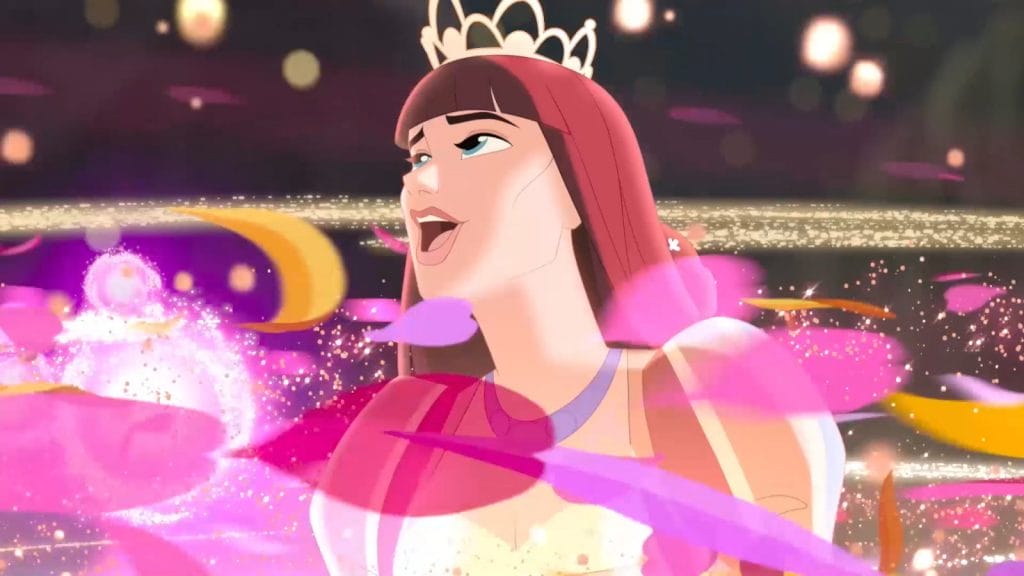
So you really had a hand in every animated sequence, because you were touching on a little of everything.
Marc-André: Yes, and because I’ve got a lot of experience doing that kind of stuff, I had the some of the more complicated shots.
In the film, there is a pivotal moment, punctuated by a beautiful song, and the last shot of the “Love Power” song sequence, there is the portal effect that opens up in the 2D world, and transports Morgan and Nancy back into the real world. They have to transition from 2D to live-action and dissolve from one to the other world, seamlessly.
The VFX were huge and we needed to match the timing of the VFX in the live action. Also, getting the 2D camera move to work with the live-action camera move was really complicated. It was very helpful to be able to use the digital pipeline in Harmony for this with AFX.
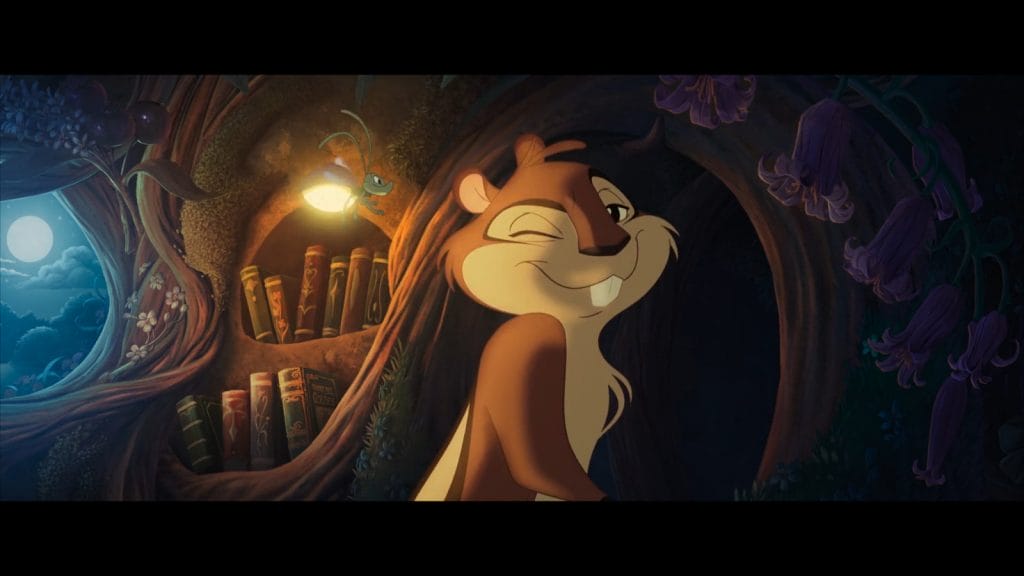
What did the planning stage of this project look like?
Marc-André: We spent a lot of time on the animatics. There were a lot of 3D camera moves, so it was necessary to do elaborate animatics to get the timing right. Since the film was mostly live action, we would send the animatics to the film’s editor and we would adjust according to the overall storytelling needs. Otherwise, it’s a regular production.
In parallel, while doing storyboard and animatics, we developed background locations, VFX, and character designs. Then we went into the next stage. But even at that point, there was a lot of happening in parallel. And while getting used to working from home. We managed to set-up either Zoom or Team meetings and had a lot of new software to install, to ensure security was kept through-out.
We worked with ShotGrid to transfer files and scheduling. As we moved into production, layouts and backgrounds were done in Photoshop, and we animated all of the characters in Toon Boom Harmony. All the traditional effects were designed and animated in Harmony as well.
For the opening sequence, on top of the 32 fully animated characters, there were a lot of 2D effects. Something like 98 instances of ripple effects and 59 instances of waterfalls. These were designed and animated in Harmony. I imported all of these into After Effects to do the multiplane camera move. We designed and painted 12 locations for this sequence alone. In the end, about a hundred people worked on the sequence. My composition had something close to 2,700 layers.
Covid and the work-from-home paradigm that nobody had ever done before did allow us to access great talent. Before then, having to work from the studio made it very difficult to get the talent that you needed. 2D animation is a smaller world than 3D animation. To find all that talent, we had to go outside Montreal, in Quebec, in Ontario. And even in other parts of the world to get animators that could do the level that was necessary.
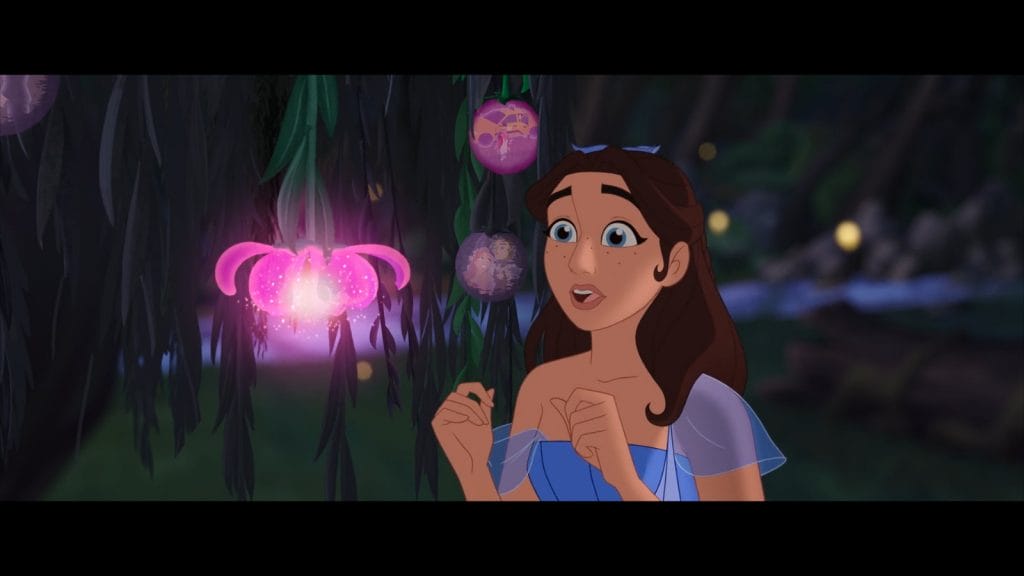
The silver lining of lockdown is that people don’t have to be location-dependent. I’ve been speaking to people from all over the world whose careers just exploded, because now they don’t have to relocate to a different country in order to have opportunities.
Marc-André: Yes, they can work from home without having to deal with moving and all its implications.
But besides the transition to remote work, was it a typical 2D production?
Marc-André Bourgoin: It’s a traditional process, except that instead of doing it on acetate and under a camera, like in the old days, you basically draw everything on Cintiqs and do the compositing digitally. We had to use different software due to technical limitations.
There were some technical things that were rather complicated, even with After Effects. At the time, we had to get a plug-in to be able to work in the ACES colour space in After Effects, and it didn’t give quite the same results as it did in Nuke. Most of the sequences were fully 2D and didn’t interact with any live action so the slight difference wasn’t a factor.
The sequences that had combinations of live action and 2D were finished elsewhere. We delivered the composited 2D plates. These would be composited into the live action with Nuke. Every time 2D would be seen in the real world, it was through a water effect, either in the well or in the waterfall later in the film.
We would do all the compositing of the shading on the characters in Toon Boom as the look of the animation and shadows VFX was still a traditional 2D look. In After Effects, we did what I guess you would call the next step in multiplane camera moves, setting up the flat artwork in the 3D environment.
There were no 3D meshes or anything like that. The perspective was already built into the layouts and the backgrounds, which actually added an extra level of complexity into creating a camera move, especially for the opening sequence. Since everything was built in, we would have to cheat and deform the backgrounds to make them look like they were flat, but in a 3D space as we flew over them.
So, in some cases, I would either add rotations to the trees so that they stayed facing the camera, or stretched, and even rotated the backgrounds. And I would use little moments in the camera move in to trick the viewer into thinking that it was all continuous. Like as we’re flying up over the castle and to the sky, I was able to change the entire background at that moment.
The castle was huge. It had a lot of pieces and animated elements, and it had all that foreground river stuff as well. It was really an enormous number of layers to compose. And unlike 3D, that has reflective surfaces, I had to build all the reflections visible in the river.
We couldn’t use all the high-resolution images directly. Some of the images were so big, I had to break them off into pieces to have enough resolution. Just for a single layer of a tree, I had to split it off into a bunch of pieces so that it could actually be rendered. Otherwise, it would just go beyond the ability of After Effects to render anything.
I can imagine that at that point everybody’s computers would just keel over.
Marc-André: There’s also limitations in file size. Sooner or later, you reach that point. Then you have to find tricks to get the software to work with it.
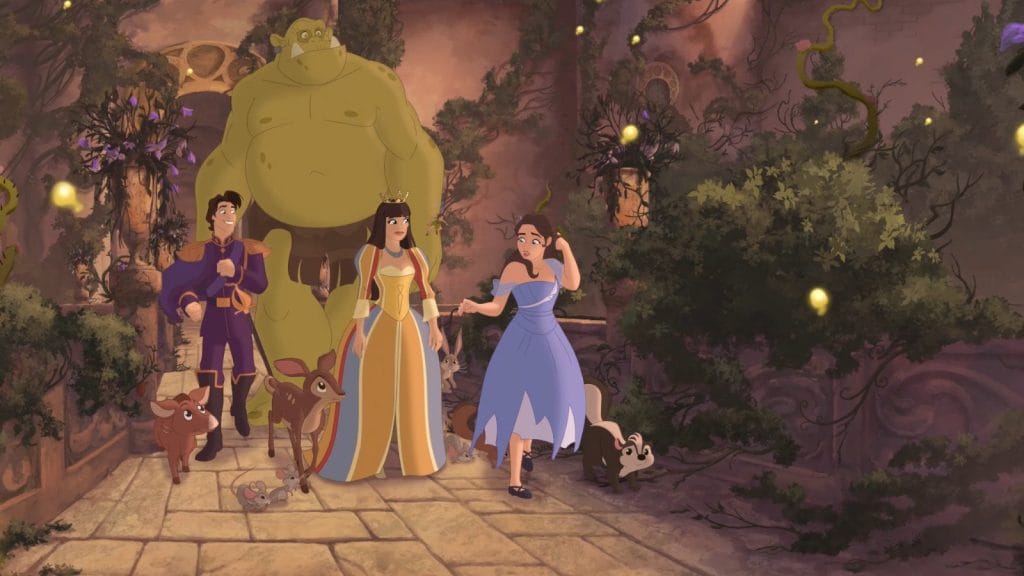
That’s an incredibly tall order: to have these extremely detailed, very complicated shots that pay homage to the classic Disney 2D style, but still feel like they belong in the world of a live action production, all within a digital pipeline. Did you have many previous productions to pull from, in terms of how to handle this?
Marc-André: We do a lot of commercials, so we’ve done spots that had that kind of combination before quite a few times. So it’s something that we’re used to, but not on that scale.
You mentioned that Disney was really looking for that classic, 2D animation feel. Has there been more of a demand for 2D animation recently, or do you foresee more of a demand for it?
Marc-André: There has been, in the last few years, especially fully traditional animation. That said, a lot of stuff has gone towards 2D cut-out animation in the last 20 years. For us, the idea is that, if we are doing cut-out, we try to make sure it doesn’t feel like it’s cut-out. But we’ve also had quite a bit of full animation come our way. Warner Bros. had a revival, doing the Bugs Bunny cartoons. We’ve been doing quite a bit of those and it’s all full traditional 2D.
Obviously, 3D and video games are extremely popular and most of the stuff that gets done these days is done in 3D, just because it’s a bigger market. And then even in live action films, all the visual effects expand that market. So, a lot of people go towards that.
In Montreal, there are a lot of 2D artists coming out of schools. The programs are really solid, and it gives us the ability to get that talent. It took years to get to a certain level, and now artists come into our studio and they know the software better than we do. They organize themselves quite quickly and they adapt to the realities of production.
It’s interesting to talk about this with artists of different ages. Everybody agrees that neither 2D or 3D is better than the other. They’re both different mediums with different limitations and advantages.
Marc-André: Well, it was expensive to make and there were only a few films coming out in the eighties and nineties. There’s a lot more of it now.
I think 3D films have helped 2D as well. And I also think that some of the networks, like Netflix, have helped. They’ve exposed more people [in North America] to anime. It’s getting interest by age groups that weren’t looking at cartoons.
For a long time, animation was “just for kids.” In reality, it wasn’t designed that way at the beginning. It was really aimed at the general public. Yeah, it’s interesting to see it all evolve.
- Disenchanted is available to stream on Disney+. For more info on Tonic DNA, be sure to visit the studio’s studio’s website.
- Will your next project blend 2D and 3D animation? See how Toon Boom Animation is supporting hybrid productions with Storyboard Pro 24 and Harmony 24.


